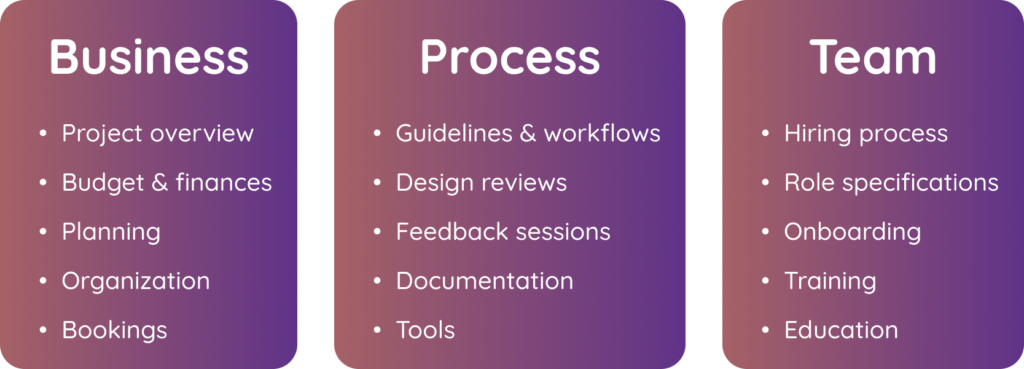Developing the right skills for a job often takes years, and actually we never stop learning. But skills are only one part of being able to do your job successfully. The right environment in which we work is just as important.
So how do you organize design work? This is where Design Operations – or short Design Ops – comes in, because chaos often happens pretty quickly before you know it, you don’t know where your head is. Where did I put that file? How did we proceed on the last project? Who do we need to involve in planning and decision-making? What do I need for the next workshop? Actually, these are standard procedures, but without a system, it often ends in unplanned chaos.
If we use the comparison of a construction site, there are the workers who work every day to make a new building come into being. However, that is only the part we see. In order for the construction workers to do their work, a lot of planning and organization is needed beforehand and also during.
It’s very similar in product design. Let’s take a look at that.
What does Design Ops mean?
In the engineering world, DevOps (development operations) is a concept that has been known for a long time and is also practiced as such. It involves, for example, simplifying the deployment infrastructure and organizing workflows to make the developers› daily work easier.
“Operations are basically responsible for all of the overhead that makes design happen.” Josh Ulm — ORACLE
Design Ops (Design Operations) is also about organizing workflows and processes – and much more, but just in terms of design. This includes, for example:
- Digital devices
- Tools
- (Digital) infrastructure
- Office furniture
- Workshop & office material
- Team development
- Onboarding
just to name a few. We’ll get into more detail about the tasks involved for a DesignOps role below. But first, let’s explore the question of why DesignOps is needed in the first place. Can’t designers do it themselves?
Why is Design Ops important?
In contrast to development, in design, the idea of operations has not yet arrived everywhere and often design work is completely integrated into the IT team and the same processes and workflows are imposed on the design work. Of course, cross-functional teams are important and collaboration between dev and design is certainly high on the agenda. However, UX and UI tasks cannot simply be integrated one-to-one into dev workflows, as in sprints when working according to Scrum or similar agile methods.
Design has its own ways of working and processes, which do not always fit into existing development workflows or match the general planning in the Dev environment. Therefore, it is important to establish not only the DevOps mindset in the company, but also the DesignOps concept.
When is Design Ops needed?
Not everyone needs to think a lot about design ops. As a solo designer at a small startup, you probably have a workflow that works for you, even without defining large processes. However, even here it’s worth having a certain system in place from the start, because presumably the goal here is to grow as well. And as soon as you are a design team of two, certain agreements become necessary – better, there is already a working system.
If you notice that the designers in the company where you work spend a lot of time on organizational stuff, then it might be time to think about a DesignOps role. Tasks that often cost designers a lot of time are, for example, enabling user access to tools, requesting budget, booking rooms for meetings, ordering materials for in-person workshops and so on.
But especially large companies with several designers or even design teams benefit from Design Ops. The better the overall design organization is, the more time the designers in a company have to actually design and thus do what their actual job is.
How to do Design Ops?
The typical tasks of a Design Ops role can be divided into three areas:
Business
- Get an overview of the design team and make sure the right designers are working on the projects that fit their profile
- Keep track of budget and finances and give feedback to the design management team
- Take care of room bookings, tools, accounts, and the necessary material needed for workshops
Process
- Create a guideline on how methods and workflows are applied in the design team
- Plan and organize regular design reviews for all designers/design teams
- Regularly ask for feedback from the design team on how methods and processes could be improved
- Ensure that everyone has access to the documents, tools, and systems that are important to them.
Team
- Establish criteria and requirements for specific design roles and contribute to the hiring process
- Take care of onboarding material for new members of the design team
- Collect and provide material for training sessions
- Invite design team members to give regular insight into their work, e.g. at internal insight session
The list could definitely go on and on, and of course the individual tasks differ again from company to company. But you probably now have a good overview of what belongs to a Design Ops role.

Get into action
Design Ops is a role that has its reason to exist, especially in growing design teams. But even without an Ops role, certain concepts can be taken from it to improve your own planning when working as a product or UX designer.
Many tasks in Design Ops happen in the background, yet they are indispensable because they form the basis for the work of the design teams to run smoothly.
Do you like reading while having your cup of coffee?
The Grab a Coffee newsletter provides you knowledge and tips from UX and UI design, supports you to start a tech design career and gives you insights and real life experience from a remote worker and part-time digital nomad. And all this for the length of having a delicious cup of coffee. Sign up today!
By subscribing you agree to mailerlite’s privacy policy. You can unsubscribe anytime. For more details, review our data policy.

